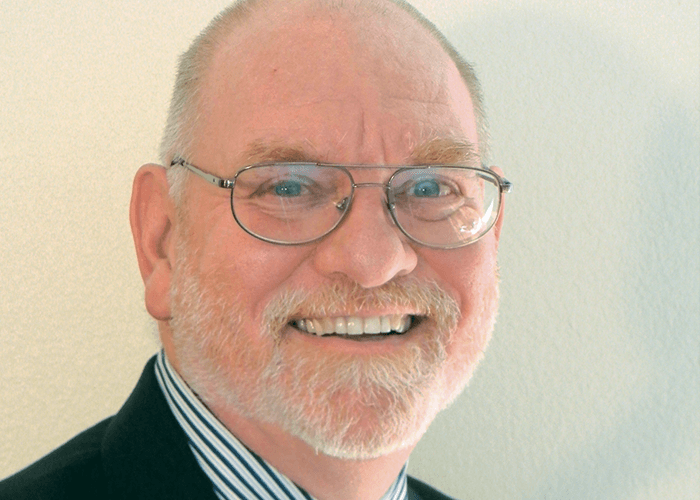
You’re taking me quite a long way back – I’ve got a ribbon on my ARVO badge representing over 30 years of membership! I started out in Canada as an undergraduate studying biological sciences, and then I moved on to a Master’s degree in human anatomy, and then a PhD in human anatomy and cell biology – my research was on the retina, specifically photoreceptors. Next, I took a position as a postdoc; when I got there, they’d just received a new grant for studying the cornea (back when institutions got more speculative grants than they do now). They asked if I’d be interested, so I read the grant and realized that there was a lot of clinical knowledge of the cornea (and specifically the endothelium) but there was a need for basic science information. It was a great opportunity, so I stayed for around two and a half years and then helped my boss move her lab up to the University of Louisville’s Kentucky Lions Eye Institution, which is where Alcon recruited me.
Originally, I was working to set up their electron microscopy unit, but over the years I worked in many areas including cornea, glaucoma, and retina. Alcon was of course purchased by Novartis, and in 2013 the decision was made to move the research component up to its research facility in, Cambridge, MA. By this time, I was old enough, so I “retired.”
Right. Over the years, one of my duties at Alcon had been to liaise with Lions Eye Institute to secure human ocular tissue for various research models, so it worked out perfectly; I was familiar with them, and they were looking for a scientific director to help work towards their research goals.
One problem we’re working on is death-to-preservation time. Ten or fifteen years ago, the type of research being done on human tissue allowed researchers to receive tissue 24–36 hours after it was harvested, without any problems. Now, with all the new molecular techniques being used, death-to-preservation time is becoming increasingly important – we want as small a window as possible. Today, we can get tissue into our lab 6–8 hours postmortem, perform a preliminary dissection, and then take the required tissues and freeze or fix them. The process essentially stops the degradation, so it doesn’t matter if the researchers don’t receive the tissue for 48 hours or so.
One of our longer-term plans is a biorepository. We’ve created a prospective model, and we have clients who want specific tissue that we dissect, freeze, and store for them. The problem is that it’s an expensive process when you consider screening, recovery coordinators, lab space, and so on. And the reality is that grant-funded academics often aren’t able to fully reimburse us. To address the issue, we’ve approached various agencies to see if we can get some basal funding. Then, if grantees want tissue, they can contact us and our basic costs are already covered. At the moment, people want rapid preservation and high-quality tissue, but for a variety of reasons they’re only able to pay about a third of what it really costs us to do that... As a nonprofit, we’re not trying to make money, but we do need to cover our processing costs.
These days, an increasing number of surgeons are using new techniques in corneal transplantation, with endothelium and a small amount of stroma (as opposed to full penetrating techniques) – and they are improving vision amazingly. Even just a few decades ago, patients appreciated much smaller improvements. But now, they want excellent vision – and we’re a part of making that happen. Instead of the surgeon sitting in the OR preparing the tissue with the patient waiting, an eye bank can provide the tissue so that it’s sitting there ready to go. It also brings economic benefits, as it decreases time spent in the OR. Around 45–50 thousand transplants occur in the US every year, and as our techniques become more sophisticated, we’re able to do more and more to help. And we’re also able to contribute specifically to different types of research that could lead to life changing treatments for many eye diseases. It now feels like we’re being considered more as partners than simply as ‘the tissue providers.’
We don’t want to limit our work – I’ve been speaking with research chairs from the Association of University Professors of Ophthalmology and they were very supportive of our plans to try and start a biorepository program. Eventually, we want to be able to provide tissue to anybody with a National Eye Institute grant. Of course, every eye bank starts small and builds up – so we’ll start locally with Florida, but our eventual vision is that our tissue will be available across the country, and then around the world.
